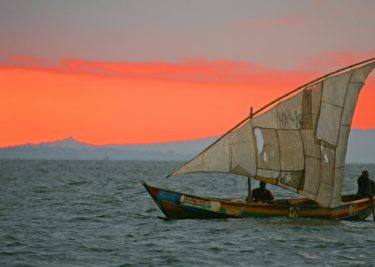Kisumu Town, Kenya

Image Credit: Discover Kenya
While the country now boasts of several metropolitan areas, Kisumu is still holding it down as one Kenya’s largest cities. And this has been the case for many years. Currently, Kisumu is one of the consistently growing cities in East Africa, thriving thanks to various horticultural industries as well as its nearness to the jewel that is Lake Victoria. But that being said, Kisumu has been raved about, sang about, talked about, and written about… Which makes one wonder, is it the name that invites the excitement? Perhaps so.
Kisumu is an extension of the Luo word ‘sumo’ which means a place for barter trade. Many years ago, it was simply a vast area on a rocky ridge full of briars overlooking a magnificent reservoir. Sumo was presumably a place where different communities met to exchange goods for goods or services. Advancement, however, though unpredictable at the time, was bound to occur.
In 1898, British explorers identified the area as a suitable port for the Uganda railway line whose construction commenced in 1895 by the shores of the Indian Ocean. By 1899, just two years shy of the project’s completion, the first skeleton plan for Kisumu was drawn, and in it was demarcations for colonial government buildings, retail shops, and residential areas. The following year, plots were allocated to Europeans and Indian railway contractors. The line reached Kisumu in December of 1901. The last nail in the railway sleeper was driven in by Lady Florence Preston, wife of Ronald Preston, one of the project engineers. The moment was commemorated by naming the area after her, and so for a year, Kisumu was called Port Florence.
It wasn’t until 1903 that the township boundaries were gazetted in The African Standard. 12,000 acres of land and water were set aside for the development of the town. North of the Gulf, the area was referred to as Old Kisumu and here Dukas were set up. In the 1920s, the Dukas were demolished when new plots became available in the present day central business district.
The next decade, Kisumu was moving forward by leaps and bounds, establishing itself as a leading East Africa Centre for commerce, as well as administrative and military installations. In 1940, the town further progressed and became a Municipal Board. Two decades later, it became a Municipal Council. At the dawn of Kenya’s independence in the early sixties, there was an influx of indigenous Kenyans settling in Kisumu.
In the 70s, yet another change – the collapse of the East African Community – impacted the growth of the city. For almost twenty years, the growth was stagnant but things turned around for the better when the community was reformed in 1996.
Presently, Kisumu is a great getaway for lakeside viewpoints such as at the Dunga Hill Camp and Hippo Point. The city’s museum, Kisumu Museum, displays artifacts related to the people of former Nyanza Province and is home to herds of impalas and zebras at the Kisumu Imapala Sanctuary along with several wild animals like cheetahs and baboons.






